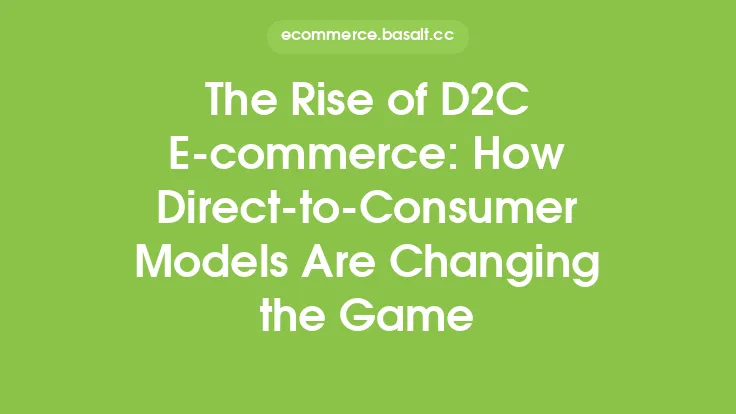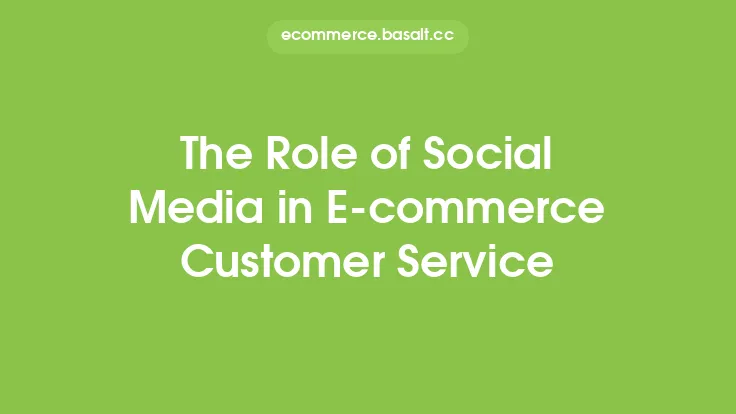The world of e-commerce has undergone significant transformations over the years, with the rise of social commerce being one of the most notable developments. Social commerce refers to the integration of social media and e-commerce, allowing consumers to discover, purchase, and interact with products directly within social media platforms. This phenomenon has been gaining traction, and its effects on traditional e-commerce are multifaceted.
Introduction to Social Commerce
Social commerce has been around for several years, but its popularity has surged in recent times. The primary drivers of this growth are the increasing number of social media users, advancements in technology, and the evolving behavior of consumers. Social media platforms such as Facebook, Instagram, Pinterest, and TikTok have become essential channels for businesses to reach their target audiences. These platforms provide a unique opportunity for companies to showcase their products, engage with customers, and drive sales.
Key Features of Social Commerce
Social commerce offers several features that distinguish it from traditional e-commerce. One of the primary advantages is the ability to discover products through social media feeds, stories, and influencer partnerships. Social media platforms use algorithms to personalize content, making it more likely for users to encounter products that align with their interests. Additionally, social commerce enables seamless checkout processes, allowing customers to purchase products without leaving the social media platform. This streamlined experience reduces friction and increases the likelihood of conversion.
Impact on Traditional E-commerce
The rise of social commerce has significant implications for traditional e-commerce. One of the most notable effects is the shift in consumer behavior, with more people turning to social media for product discovery and research. This change in behavior forces traditional e-commerce businesses to adapt and invest in social media marketing and advertising. Moreover, social commerce has raised the bar for customer experience, with consumers expecting personalized, interactive, and immersive experiences. Traditional e-commerce businesses must now focus on creating engaging content, leveraging user-generated content, and utilizing social media analytics to better understand their target audiences.
Benefits of Social Commerce
Social commerce offers several benefits for businesses, including increased brand awareness, improved customer engagement, and enhanced sales. Social media platforms provide a vast reach, allowing companies to tap into new markets and customer segments. Moreover, social commerce enables businesses to collect valuable data and insights, which can be used to inform marketing strategies and optimize product offerings. The ability to track customer interactions, preferences, and purchasing behavior helps businesses refine their targeting and improve the overall customer experience.
Challenges and Limitations
While social commerce presents numerous opportunities, it also comes with its own set of challenges and limitations. One of the primary concerns is the issue of trust and security, as consumers may be hesitant to make purchases within social media platforms. Additionally, social commerce requires businesses to have a strong social media presence, which can be resource-intensive and time-consuming. The ever-changing algorithms and policies of social media platforms can also make it difficult for businesses to maintain a consistent presence and reach their target audiences.
Future of Social Commerce
The future of social commerce looks promising, with ongoing advancements in technology and evolving consumer behavior. As social media platforms continue to invest in e-commerce capabilities, we can expect to see more seamless and integrated shopping experiences. The rise of augmented reality (AR) and virtual reality (VR) will also play a significant role in shaping the future of social commerce, enabling businesses to create immersive and interactive experiences that blur the lines between online and offline shopping. Furthermore, the growth of social commerce will be driven by the increasing importance of mobile devices, with more consumers using their smartphones to discover and purchase products.
Strategies for Success
To succeed in the world of social commerce, businesses must develop a deep understanding of their target audiences and create content that resonates with them. This involves leveraging social media analytics, utilizing influencer partnerships, and investing in high-quality visual content. Additionally, businesses must prioritize customer experience, ensuring that their social media presence is consistent, engaging, and responsive. By focusing on these key areas, businesses can unlock the full potential of social commerce and stay ahead of the competition in an ever-evolving e-commerce landscape.
Conclusion
The rise of social commerce has transformed the e-commerce landscape, offering new opportunities for businesses to connect with customers, drive sales, and build brand awareness. As social media platforms continue to evolve and improve their e-commerce capabilities, we can expect to see even more innovative and immersive shopping experiences. By understanding the key features, benefits, and challenges of social commerce, businesses can develop effective strategies to succeed in this rapidly changing environment. As the world of e-commerce continues to shift and adapt, one thing is certain – social commerce will play an increasingly important role in shaping the future of online shopping.





